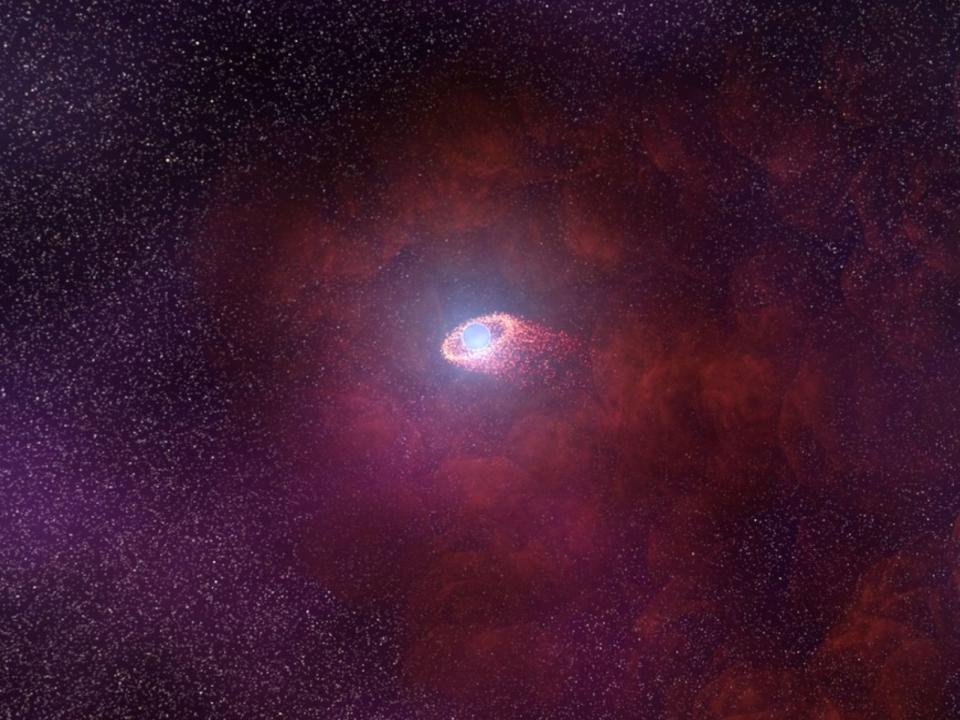NASA perplexed by 'unusual' infrared light from neutron star

Scientists at NASA have discovered "an unusual infrared light emission from a nearby neutron star" which "could indicate new features never before seen".
One of the guesses for the mysterious light is a disc of dust surrounding the neutron star filtering out light of particular wavelengths.
Another possibility suggested by NASA is that there is a energy-heavy wind coming off of the neutron star and slamming into interstellar gas as the star ploughs through space.
Researchers normally study neutron stars in the radio and high-energy parts of the electromagnetic spectrum, such as from X-rays.
However the new observations suggest that the infrared portion of the spectrum could provide clues about the secrets of the universe too.
A team of scientists at Pennsylvania State, Sabanci, and Arizona universities believes that the observations could help astronomers discover the secrets behind the evolution of neutron stars.
Neutron stars are incredibly dense and remain in space after massive stars explode at the end of their lives.

They are also known as pulsars because of their extremely fast rotation - typically fractions of a second, although in the case of this star 11 seconds - which causes them to beam out light.
"This particular neutron star belongs to a group of seven nearby X-ray pulsars - nicknamed 'the Magnificent Seven' - that are hotter than they ought to be considering their ages and available energy reservoir provided by the loss of rotation energy," said Dr Bettina Posselt.
Dr Posselt, an associate research professor of astronomy and astrophysics at Pennsylvania State and lead author in the paper published in the Astrophysical Journal, said there are two theories about what is causing the curious light.
"One theory is that there could be what is known as a 'fallback disk' of material that coalesced around the neutron star after the supernova," said Dr Posselt.
"Such a disk would be composed of matter from the progenitor massive star. Its subsequent interaction with the neutron star could have heated the pulsar and slowed its rotation.
"If confirmed as a supernova fallback disk, this result could change our general understanding of neutron star evolution," Dr Posselt added.
The second possible explanation is what is called a "pulsar wind nebula" which Dr Posselt said can be produced "when particles are accelerated in the electrical field that is produced by the fast rotation of a neutron star with a strong magnetic field".
As the neutron star powers through space at speeds greater than sound, a shockwave can form when it interacts with the wind the star emits.
"Typically, pulsar wind nebulae are seen in X-rays and an infrared-only pulsar wind nebula would be very unusual and exciting," added Dr Posselt.

 Yahoo News
Yahoo News 
